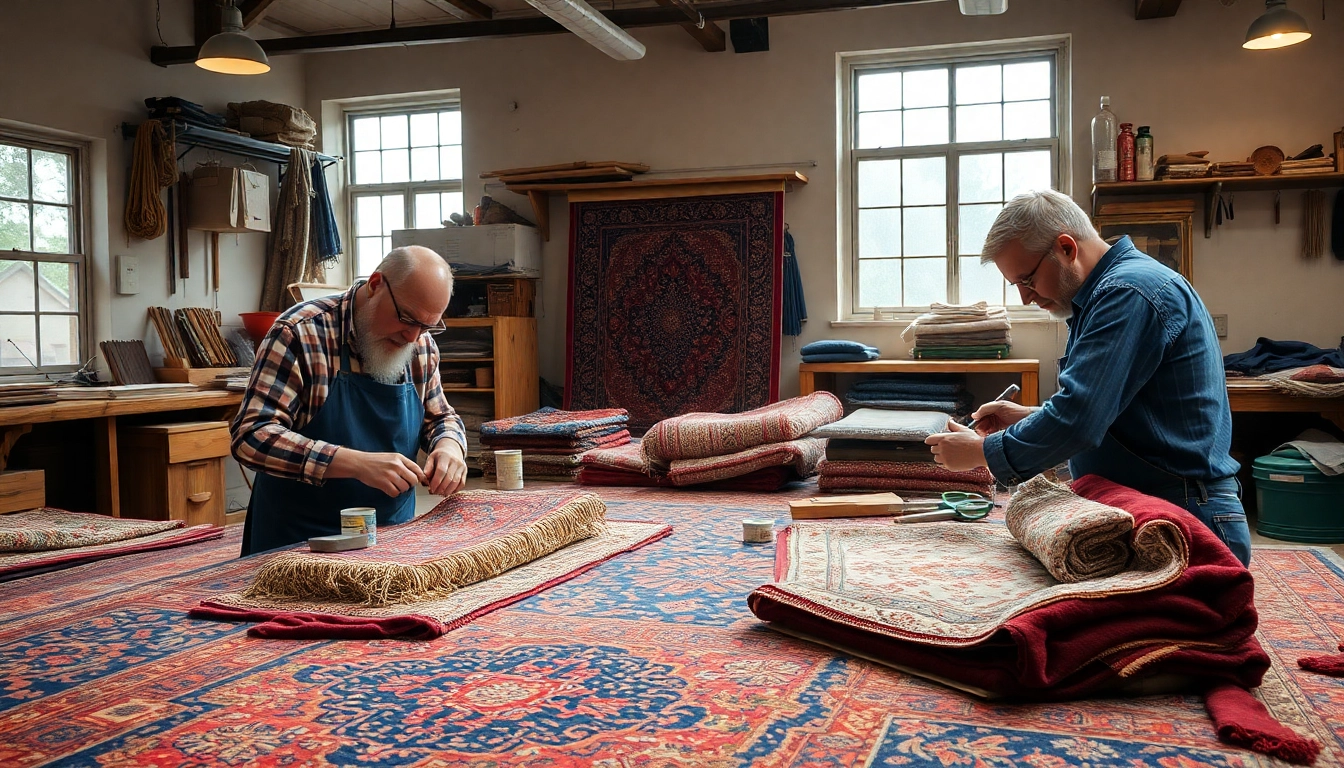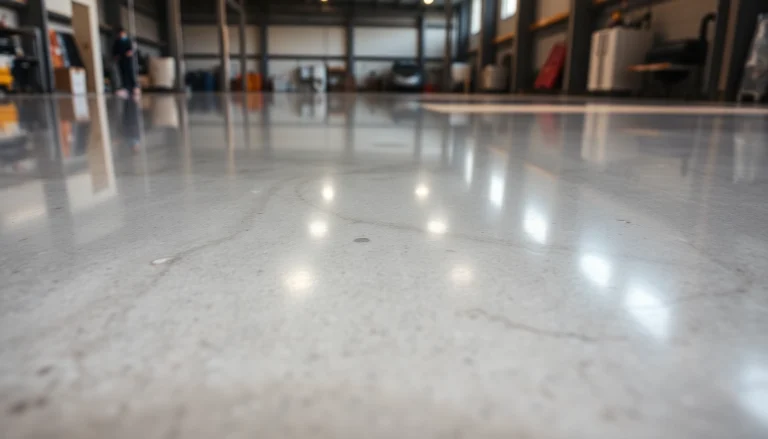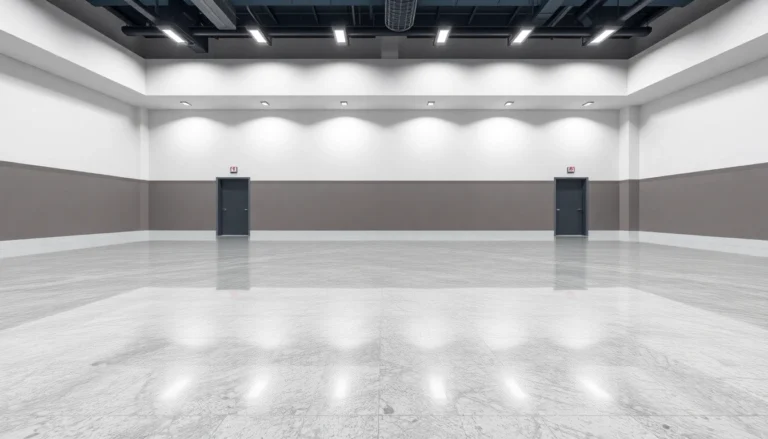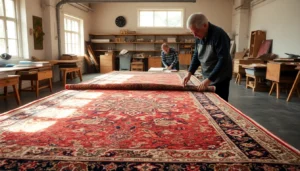Understanding the Importance of Restauro Tappeti Milano
In a city renowned for its artistry and historical richness like Milan, preserving the cultural heritage embedded within its exquisite carpets is more than a tradition—it’s a vital aspect of safeguarding history and craftsmanship. Restauro tappeti Milano, or carpet restoration in Milan, is a specialized field that combines meticulous craftsmanship with advanced techniques to restore antique and modern carpets to their original splendor. As Milan continues to embrace contemporary design, it also sustains a deep respect for the vintage and antique carpets that tell stories of past civilizations, artisanship, and cultural exchange. Restoring these pieces ensures their longevity, enhances their aesthetic appeal, and preserves their historical significance, making it an essential service for collectors, interior designers, and homeowners alike.
Why Restoring Antique Tappeti Matters
Antique carpets are invaluable artifacts that reflect centuries of artistry, cultural narratives, and regional identity. Their restoration is far more than cleaning; it involves a delicate process that repairs damages, revitalizes colors, and ensures structural integrity without compromising authenticity. Proper restoration prevents deterioration, reduces the risk of tears or fraying, and maintains the vital character of each piece. A well-restored antique can increase in value and become a centerpiece within any interior while embodying historical accuracy and aesthetic excellence.
Key Techniques Used in Tappeti Restoration
Professionals employ an array of techniques tailored to the specific needs of each carpet. These include:
- Cleaning and Dirt Removal: Gentle yet effective cleaning methods that eliminate embedded dirt, dust, and pollutants, often using dry or wet cleaning processes suitable for delicate fibers.
- Color Restoration: Repainting or dyeing areas of fading or discoloration with natural or synthetic dyes closely matched to the original hues, while preserving the fabric’s authenticity.
- Structural Repair: Reinforcing or replacing damaged warp and weft threads, patching holes, or reweaving worn-out sections using traditional hand-weaving techniques.
- Fringe and Edge Repair: Restoring or replacing frayed edges and fringes with materials that match the original craftsmanship.
- Protection Treatments: Applying protective coatings or anti-mite treatments to prevent future deterioration.
Historical Significance of Preserving Vintage Carpets
Vintage carpets are living documents of history, capturing cultural, geographical, and technological stories. Restoring such pieces in Milan supports the preservation of regional identities, especially for Persian, Turkish, and oriental art forms. These carpets are often scarce, fragile, or irreplaceable, making their restoration not only a professional service but a cultural responsibility. Through skilled intervention, Milanese restorers contribute to ongoing dialogues between past and present, ensuring these traditions continue to inspire future generations.
Step-by-Step Guide to Professional Tappeti Restoration
Initial Assessment and Damage Detection
The process begins with a comprehensive assessment by a restoration expert. This includes analyzing the carpet’s age, material composition, condition, and specific damages such as tears, stains, or color fading. High-resolution imaging, UV light inspection, and sometimes microscopic examination help identify hidden issues, ensuring that every aspect of damage is documented before intervention.
Cleaning, Repairing, and Color Restoration
Once assessed, the cleaning phase is carefully executed. Gentle, specialized cleaning agents remove dirt without weakening fibers. Repairing involves hand-weaving or patching damaged areas with matching materials—often silk, wool, or cotton—using traditional knotting and weaving techniques. Color restoration is performed with precise dyeing, respecting the original palette to maintain authenticity. These steps are crucial for revitalizing the carpet’s appearance and structural integrity.
Final Quality Checks and Protection Methods
After repairs, a detailed quality check ensures that restoration meets professional standards. The carpet may undergo additional treatments like surface stabilization or protective coatings that safeguard against future damage. Properly packaged, stored, or displayed, the restored carpet is prepared for its next chapter, whether as an art piece or a functional element in interior design.
Choosing the Right Restauro Tappeti Milano Service
Qualities of a Trusted Restoration Expert
Selecting a reputable restoration service is crucial. Look for providers with years of experience, certifications, and a portfolio of completed projects. In Milan, top artisans combine traditional craftsmanship with modern techniques—ensuring authenticity and durability. Transparent consultation processes, clear estimations, and testimonials serve as indicators of reliability and professionalism.
Cost Factors and Budgeting for Restoration
The cost of restoring a carpet varies depending on size, material, age, and extent of damages. Typically, prices can range from as low as €50 for minor repairs to over €1,000 for extensive restoration involving antique pieces. It’s important to obtain detailed quotes that specify individual services, ensuring no hidden charges. Investing in quality restoration adds value and lifelong preservation to your carpets, making it a worthwhile expenditure.
Timing and Care Tips Post-Restoration
Restoration timing depends on the project’s complexity but generally spans from a few days to several weeks. After restoration, maintaining the carpet’s condition involves regular vacuuming, avoiding direct sunlight, using appropriate padding, and promptly addressing spills. Consulting your restoration expert for tailored care tips ensures longevity and continued beauty.
Innovations and Trends in Tappeti Restauro
Modern Techniques Enhancing Traditional Methods
Advanced laser cleaning, digital dye-matching, and computer-aided restoration are revolutionizing traditional practices. These innovations improve precision, reduce intervention time, and preserve delicate fibers. For instance, laser technology allows for non-invasive removal of stains, while digital imaging guides accurate color matching, resulting in authentic restorations.
Eco-Friendly Materials and Practices
Environmental consciousness is increasingly influencing the field. Restorers are adopting natural dyes, biodegradable cleaning agents, and sustainable materials to minimize ecological impact. These practices not only protect the environment but also ensure that restorations adhere to modern sustainability standards.
Integrating Digital Monitoring for Quality Assurance
Digital tools facilitate real-time monitoring and documentation of restoration processes. High-resolution imaging before, during, and after restoration helps ensure quality control and provides clients with visual documentation. Such transparency builds trust and enhances the overall restoration experience.
Maximizing Tappeti Longevity and Value
Regular Maintenance and Cleaning Tips
Routine vacuuming with gentle settings, avoiding harsh chemicals, and periodic professional cleaning extend a carpet’s lifespan. When cleaning at home, use soft-bristled brushes or microfibers and limit exposure to direct sunlight. Gentle brushing and periodic inspections help catch early signs of deterioration.
Preventive Measures Against Damage
Protective pads under furniture, avoiding high-traffic placement in humid or direct sunlight areas, and using climate control in storage or display spaces prevent common damages such as fraying, fading, or mold.
Knowing When to Professionally Restore Again
Timing is vital. If a carpet exhibits persistent stains, color fading, or structural issues, prompt professional restoration can prevent further deterioration. Regular expert assessments can inform maintenance schedules, ensuring the carpet retains its beauty and value for decades to come.








